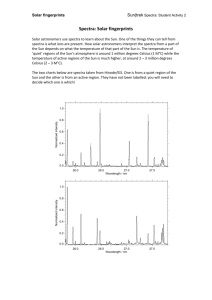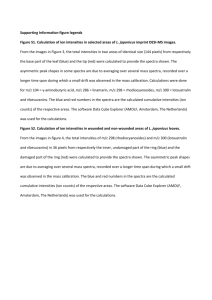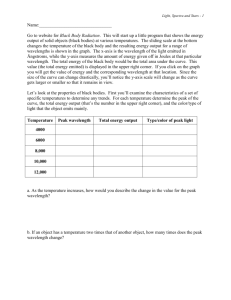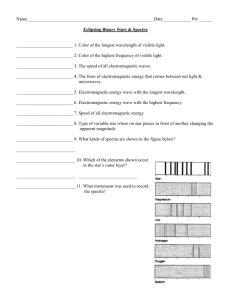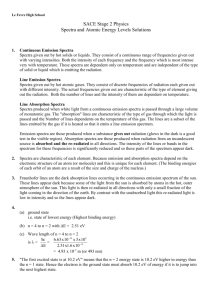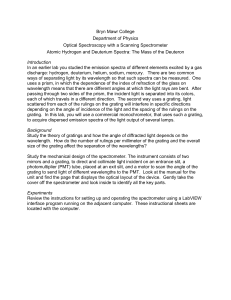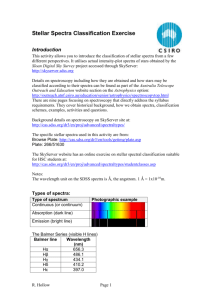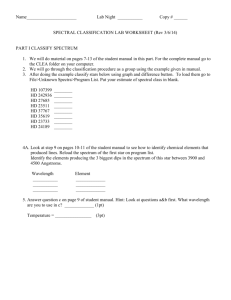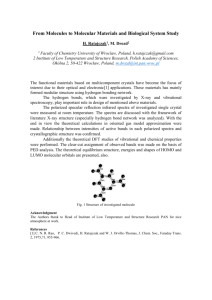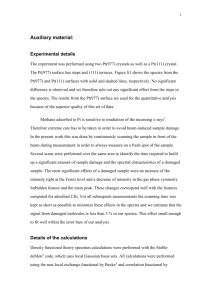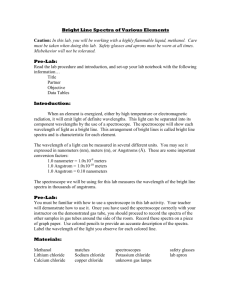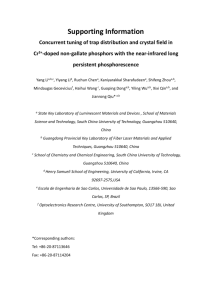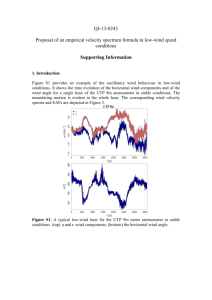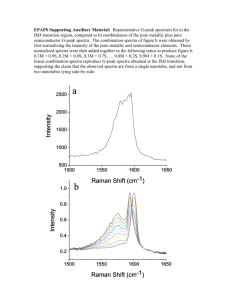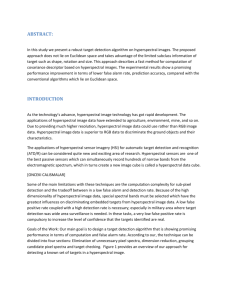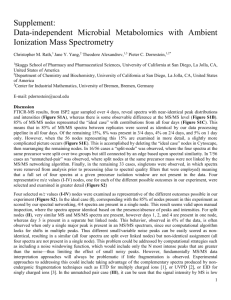Stellar Spectra
advertisement
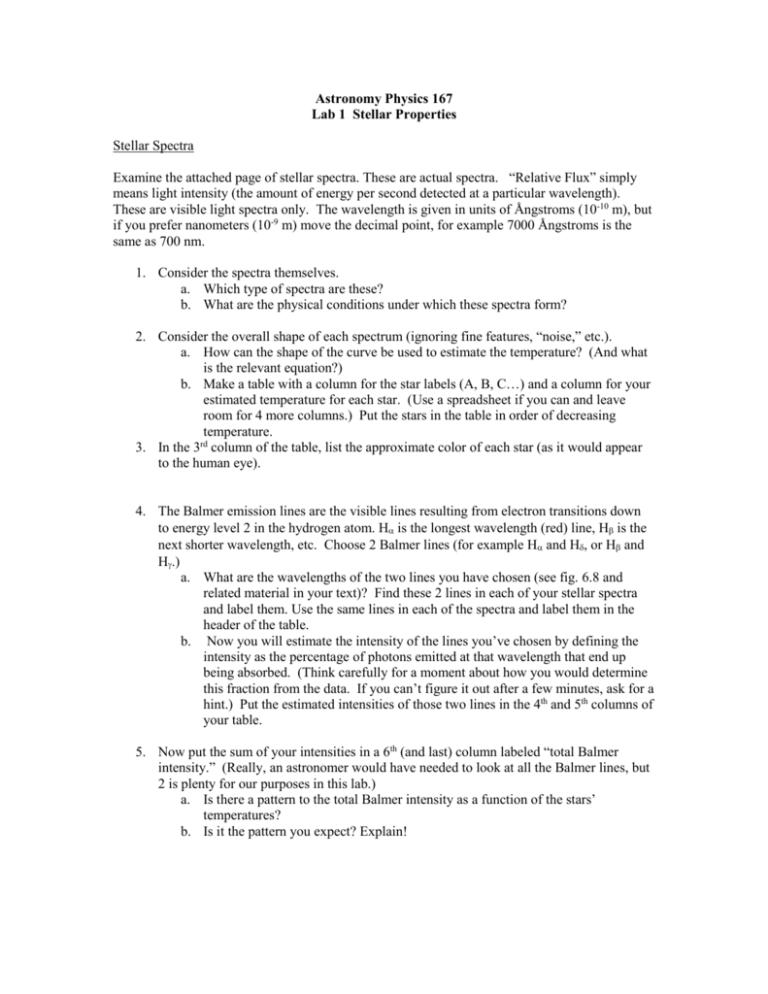
Astronomy Physics 167 Lab 1 Stellar Properties Stellar Spectra Examine the attached page of stellar spectra. These are actual spectra. “Relative Flux” simply means light intensity (the amount of energy per second detected at a particular wavelength). These are visible light spectra only. The wavelength is given in units of Ångstroms (10-10 m), but if you prefer nanometers (10-9 m) move the decimal point, for example 7000 Ångstroms is the same as 700 nm. 1. Consider the spectra themselves. a. Which type of spectra are these? b. What are the physical conditions under which these spectra form? 2. Consider the overall shape of each spectrum (ignoring fine features, “noise,” etc.). a. How can the shape of the curve be used to estimate the temperature? (And what is the relevant equation?) b. Make a table with a column for the star labels (A, B, C…) and a column for your estimated temperature for each star. (Use a spreadsheet if you can and leave room for 4 more columns.) Put the stars in the table in order of decreasing temperature. rd 3. In the 3 column of the table, list the approximate color of each star (as it would appear to the human eye). 4. The Balmer emission lines are the visible lines resulting from electron transitions down to energy level 2 in the hydrogen atom. H is the longest wavelength (red) line, H is the next shorter wavelength, etc. Choose 2 Balmer lines (for example H and H or H and H a. What are the wavelengths of the two lines you have chosen (see fig. 6.8 and related material in your text)? Find these 2 lines in each of your stellar spectra and label them. Use the same lines in each of the spectra and label them in the header of the table. b. Now you will estimate the intensity of the lines you’ve chosen by defining the intensity as the percentage of photons emitted at that wavelength that end up being absorbed. (Think carefully for a moment about how you would determine this fraction from the data. If you can’t figure it out after a few minutes, ask for a hint.) Put the estimated intensities of those two lines in the 4th and 5th columns of your table. 5. Now put the sum of your intensities in a 6th (and last) column labeled “total Balmer intensity.” (Really, an astronomer would have needed to look at all the Balmer lines, but 2 is plenty for our purposes in this lab.) a. Is there a pattern to the total Balmer intensity as a function of the stars’ temperatures? b. Is it the pattern you expect? Explain! Helpful Equations: m = M + 5 log10( d / (10pc) ) Luminosity = 4 R2 T4 Intensity = Luminosity/(4r2) (= Brightness) Kepler’s Laws
